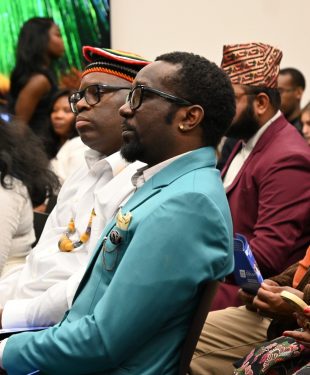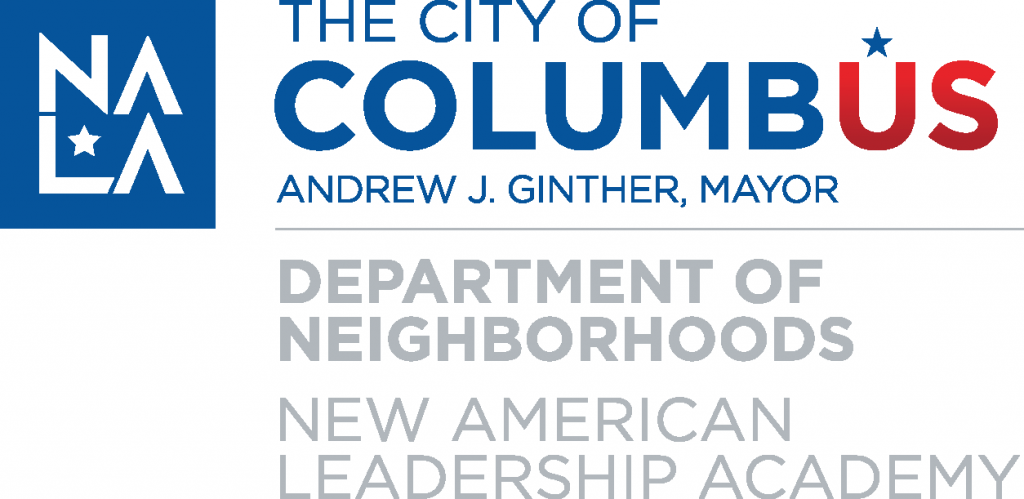By Bishnu Luitel, Harrisburg, Pennsylvania
“Planting rice in the muddy fields during Asar,
Living in the Chemgang prison while alive,
And if dead, in ‘Chaar Kilo’.”

This song is sung by prisoners in Chemgang Jail. “Chaar Kilo” refers to a cremation ground located near a river flowing towards Simtokha, Bhutan. In the 1990s, Bhutan’s authoritarian regime brutally suppressed the democratic movement. Unarmed citizens advocating for their rights were imprisoned and subjected to inhumane torture.
The lines of the song mentioned above were sung by inmates when they were taken out to be fed. This song was composed by Bhutanese rulers to mentally torture political prisoners confined in Chemgang Jail. Alongside mental harassment, prisoners were subjected to barbaric physical torture. If a prisoner died during the torture, their body would be thrown at the site known as “Chaar Kilo,” a place used as a dumping ground for those who perished under torture and also served as the village cremation ground.
From the 1990s to the present day, the practice of inflicting severe torture on political prisoners continues unabated. This article attempts to shed light on the severe oppression and atrocities endured by political prisoners who survived over three decades of brutality and were eventually released.
The sources of these events are former prisoners who miraculously survived extreme torture in Chemgang Jail and returned home. For security reasons, their names have not been disclosed. Their tearful agony has been expressed in words under the condition of anonymity. These prisoners recounted to me the severe and inhuman torture inflicted upon them in Chemgang Jail.
After being released from prison, the weeping political prisoner recounted the atrocities they endured, saying, “The rice served to prisoners always contained a shovel of soil, sand, and ash mixed into it, as though it had been washed improperly. That contaminated rice was then cooked, and we were forced to eat it.” This was part of the continuous inhumane and violent practices that the Bhutanese government inflicted on political prisoners for years.
With deep emotion, they continued, “The vegetables, too, were unwashed. Potatoes and radishes were chopped into two pieces and cooked without cleaning. These were thrown into a rusty, thick tin container. Water was poured directly from a pipe into the container based on the number of prisoners, and only salt was added. It was hardly cooked, just boiled. The so-called vegetables were served like this. The dirt and grime stuck to the potatoes and radishes made the broth murky, and it reeked of foul odor. Perhaps if the dirt and filth had not been mixed in, 20 to 25 kilograms of water would have looked clear.”
How harmful such food must have been to human health is a matter for the international community to ponder. It raises questions about how much the Red Cross Society and human rights organizations were aware of the filth served as food in the name of meals and vegetables. This aspect of investigation warrants its own exploration.
In terms of climate and weather, Chemgang is an extremely cold region where snowfall occurs. The area is situated at an altitude of approximately 2,640 meters above sea level. Until 1991, there were no proper prisons or detention facilities in this harsh, cold location. Instead, there was a cave-like structure with thick mud walls on three sides and an open front. The open side was fenced with barbed wire spaced four inches apart.
The roof and floor of this cave-like prison were made of mud. According to prisoners, the facility was once the house of a local Gup (Mandal) from Heleila village. In such a cold place, the structure lacked a proper roof or a paved floor. It was an uninsulated, ghostly structure that provided no protection from the harsh elements. Prisoners were crammed into this makeshift prison and subjected to various forms of physical and mental torture.
That’s not all—the atrocities defy description. During the winter, prisoners were forced to roll around in the snow daily. While doing so, it became impossible to distinguish whether the snow piles were people or just heaps of snow. If any prisoner showed hesitation or slowness, an army boot would strike their chest, or they’d be kicked and flung down a snowy slope for the soldiers’ amusement. Prolonged exposure to the cold would leave prisoners’ hands and feet frozen, unable to move.
The soldiers held complete control over the prisoners’ lives—whatever they commanded had to be obeyed. After the ordeal in the snow, prisoners were made to brush the snow off one another. Once that was done, they were taken to a designated area where their hands were tied. Each prisoner was stuffed into a sack, tied upside-down, and hung from a wooden pole. Beneath their heads, a pan with burning coals would be placed, and chili powder was added to create acrid, choking smoke.
The prisoners were only released from the sack once they were nearly unconscious. They were then dragged out, beaten, and thrown back into their cells. This daily torture continued unabated. Only after enduring the suffocating chili smoke were prisoners allowed to eat their contaminated food. Words like “rest” or “relaxation” were foreign to their existence.

Immediately after eating, the prisoners were shackled again and forced to work. Massive construction projects for larger prison buildings were underway outside, and the prisoners were compelled to participate. They broke stones, crushed gravel, and carried sacks of cement and sand on their backs. Each prisoner had to mix 140 sacks of cement and sand into mortar daily. Failure to meet this quota led to further physical abuse.
The prisoners worked while wearing iron shackles around their ankles. These shackles were connected to a chain that was fastened tightly around their waists. Their handcuffs were removed only during work and re-applied immediately afterward. The iron shackles alone weighed about five kilograms, and the prisoners had to perform heavy labor while wearing them.
Now, imagine the sheer manpower required to mix 140 sacks of cement into mortar daily and the amount of sand needed for such a task.
Modern-day Chemgang Prison in Bhutan is no ordinary jail—it is a Hitlerian-style gas chamber that exploits the blood and sweat of its inmates. Its construction dates back to the 1990s and was carried out by political prisoners arrested on charges of treason. Between 1990 and 1993, 300 Lhotshampa and Eastern Bhutanese prisoners were forced to build this chamber of suffering.
The prison built in the village of Heleila is said to have three units. The first unit contains 17 rooms, while units two and three have 19 rooms each for prisoners. Additionally, a visitor room, a duty room, and a library were constructed. Beyond building the prison, the political prisoners were also forced to construct a primary school for the children of the Brokpa community in Heleila village, as recounted by one of the prisoners.
“Perhaps God finally heard our cries,” the prisoner said. Suddenly, the treatment of prisoners changed dramatically. It was January 1993, though the exact date isn’t clear—it seemed to be the second week. Early one morning, some police officials came into our cells and began removing the iron handcuffs and shackles from our hands and feet.
By then, the new prison facility was nearly completed, and we were relocated there. “Before transferring us, the police freed all 300 prisoners from their handcuffs and shackles, packed them into sacks, sealed the sacks, and loaded them into a truck. We don’t know where the sacks were taken.
“From that day, we were given food without ash or dirt mixed in it. We were asked to clean our new rooms and discard our old clothes for new ones. The daily routines of rolling in the snow and enduring chili smoke torture stopped. Three days later, we learned why—the International Red Cross Society was visiting the prison for an inspection. The sudden changes in our treatment were due to their arrival.
We were overjoyed, thinking we might finally survive. There were 318 political prisoners in the facility at that time. On the third day, in the afternoon, new visitors arrived from the International Red Cross Society. They asked about our living conditions, food, sanitation, and the soldiers’ behavior. For the first time, we were able to openly share the horrifying stories of torture, oppression, and brutality we had endured.
The Red Cross expressed their sympathy and assured us that such torture would not continue. They also issued identification cards to all prisoners under the name of the ICRC (International Committee of the Red Cross). Unfortunately, those ID cards were confiscated by the police on the day of our release from prison.”
‘Now, I neither have that ID card nor the citizenship granted by the government,’ he lamented.”
“After the Red Cross inspection, everything in the prison changed. We were given clean water to drink. We started preparing our own food. The iron chains on our hands and feet were no longer required. We were given opportunities to meet with our families. Political prisoners like us no longer had to share rooms with inmates involved in crimes like theft, murder, or rape. For the first time, court proceedings to record our statements began—this only happened after the Red Cross visit.
Thank God for being on our side. It felt as though the Red Cross was God Himself, coming to save us. Perhaps the timely arrival of the Red Cross was what saved our lives; otherwise, it was certain that our existence would have ended in that gas chamber,” one prisoner said, drawing a deep breath.
Despite subjecting its citizens to imprisonment, chains, and years of torture, Bhutan’s cruel government doesn’t seem satisfied. Even after enduring harsh imprisonment and being released, many prisoners are exiled from Bhutan without reason, forbidden to even set foot on Bhutanese soil. Police are deployed to escort them across the border—a practice that continues to this day.
For those who have families within Bhutan and are allowed to stay after release, they are deprived of ownership of land or property. They cannot transfer any immovable assets to their name. Movement within the country is restricted, and they are barred from acquiring citizenship, passports, or visas.
Even after being freed from prison, they are forced to live as prisoners in their own villages, a fate they must endure until death. What a cruel irony. How long will they have to suffer this injustice?”
“Since the 1990s, the same brutality against citizens continues to this day. Despite attempts to portray Bhutan as a democracy and the happiest country in the world, its rulers have been exposed as nothing more than beggars, inept tyrants, and Hitler-like dictators who revel in the tears and blood of their people.”
The cruelty doesn’t end there. Due to the severe torture in Chemgang Prison, prisoners like Satyanarayan Bihari and many others lost their lives. Those who were tortured to death, including Bihari, were reportedly thrown into the cremation ground known as ‘Four Kilo’ in Chemgang. Satyanarayan Bihari was arrested by Bhutanese forces from a village named Namlang and taken to Chemgang Prison. To this day, the families of these innocent victims have not received their remains.
The chain of torture is not limited to Chemgang alone. The prisons in Samdrupjongkhar, Daga Pela, Sarbhang, Gelephu, Chirang, and Tashigang have inflicted no less suffering. Many prisoners lost their lives in these prisons as well, killed by the army.

For instance, in 1991, the army captured Bhakta Bahadur Pokhrel, the Mandal of Nyauli and Dalim Blocks, from his home. They beat him mercilessly with a rice mill belt until he died and then discarded his body in a toilet, desecrating it further. This heinous act has left a deep scar in our memories. Pokhrel was killed in such a brutal manner by Gup Sonam. Not only was Gup Sonam a relative of King Jigme, but he was also his classmate.
One must ask, what punishment did King Jigme give to the murderer Gup Sonam?”
Countless such incidents have occurred, gradually coming to light. The methods of torture are not uniform; they are ever-changing and horrifying. Sometimes, after lighting a cigarette, soldiers would press the burning matchstick against the prisoner’s beard. They would grab prisoners by their hair, blow cigarette smoke into their faces, and spit on them. That wasn’t the end of it; the glowing tip of the cigarette would be extinguished on the prisoners’ faces. When prisoners asked for water, soldiers would mockingly urinate in their mouths. These are only small examples of the barbaric tortures inflicted.
Many were killed, others disappeared, and numerous people were left disabled. Over 125,000 Bhutanese were stripped of everything they owned and exiled from the country. There is no record or accountability for these atrocities. Even India, the world’s largest democracy and Bhutan’s immediate neighbor, turned a deaf ear to the plight of these people. International organizations, too, remained largely silent instead of offering active support.
The brutal crimes committed by the Bhutanese government against its own citizens advocating for human rights in the 1990s were neither impartially investigated by the state nor addressed at the international level. According to the prisoners, these inhumane crimes were carried out under the direct orders and instigation of King Jigme Singye Wangchuck. They argue that in Bhutan, not even a leaf sways without the king’s command, let alone actions by the army or police.
King Jigme must be held accountable for the state terror unleashed in the 1990s, the confiscation of property from hundreds of thousands of citizens, the forced exodus, the killings of martyrs, and the maiming of thousands of people.
Do not mistake the use of military force against unarmed and helpless citizens as victory. Time is stronger and more powerful than your army. No force of yours will ever be able to stop the blows of time. Do not try to mask the blood and tears of your people with the facade of national happiness or the so-called “mindfulness city” projects. One day, the tears and blood of the victims and martyrs will undoubtedly wash away your throne. At that moment, neither your army nor your courtiers will stand by you. They will abandon you and flee.
Look at the changing situations in Syria, Sri Lanka, and even your close neighbor, Bangladesh. Reflect while there is still time. Stop the discriminatory behavior of favoring some while neglecting others. It is in your best interest to honorably repatriate the patriotic citizens who have been waiting for 33 years to return to their homeland. Until the refugee crisis is resolved, neither will you find peace, nor will the black mark tainting your face simply fade away.
Support the New Americans magazine to continue to serve our community with precise news that affect the new American, immigrant and refugee community. https://paypal.com/donate/?hosted_button_id=8LHFS78NRNJJY&source=url









































Leave a Reply
You must be logged in to post a comment.